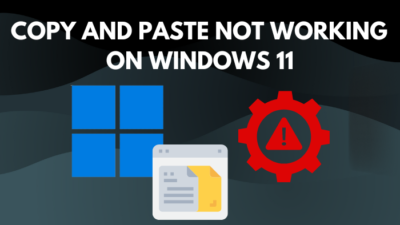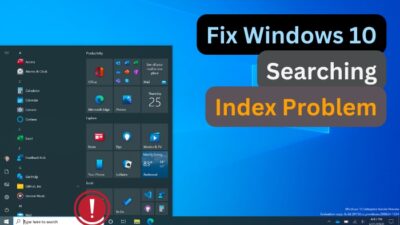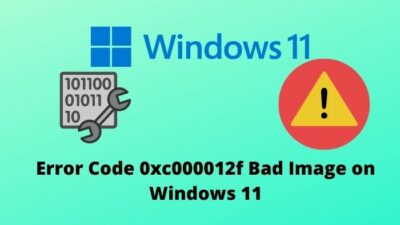Windows 8 launched in October 2012 with a colorful tiled interface, a radical change compared to its preceding OS (Windows 7 & Vista). This newly designed UI raised various annoyances among new Windows 8 users.
One of the major problems reported by the vast majority of Windows 8 users is the missing startup folder. For those familiar with Windows like myself, losing this familiar friend bugged us.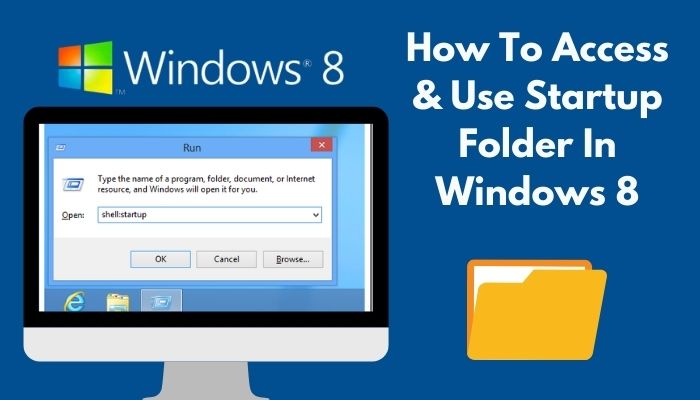
Fortunately, Windows 8 has something in common with its prior version of Windows — a trend towards maturity. There are now easy ways to bypass the missing startup folder issue.
I have thoroughly searched & monitored Microsoft community forums lately and compiled the easiest ways in great detail.
So without further ado, let’s get into it.
How to Find Startup Folder in Windows 8
The startup folder contains shortcuts of programs that run automatically whenever the computer boots up. There are two ways to locate the Windows 8 startup folder.
You can find the startup folder using a simple command prompt or by locating the folder manually from your Windows explorer.
Here are the two methods to find startup folder in Windows 8:
Method 1: Use the Command Prompt
Use the Run command to locate the startup folder. It’s the quickest & most straightforward way to find the startup folder.
Here’s how to use the command prompt:
For the current specific user:
- Press Windows Key+R.
- Type shell:startup & click OK.
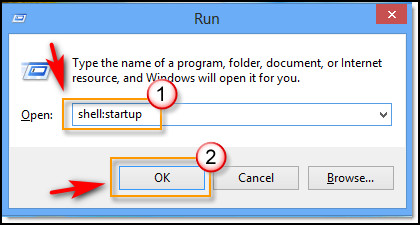
For the startup folder location of all users:
- Press Windows Key+R.
- Type shell:common startup & hit OK.
Also related: How to Unblock Websites on Windows 11.
Method 2: Locate the Startup Folder Manually
You can manually access the startup folder using Windows Explorer & pin it to Start Menu, but it’s hidden. To get there, press Windows Key+E > Navigate to the tools bar on the top left corner > Click View > Check the Hidden Items box.
For the current users’ Startup folder location, navigate to:
- C:\Users\Username\AppData\Roaming\Microsoft\Windows\Start Menu\Programs\Startup
For the Startup folder for all users, navigate to:
- C:\ProgramData\Microsoft\Windows\Start Menu\Programs\Startup
If you want it to be available from the Metro Start screen, right-click on the startup folder & click Pin to Start. Now you can directly access the startup folder from the Metro Start screen.
Also read, Schedule Windows 11 to Wake from Sleep Automatically.
Alternative Method
Apart from the two methods, there is another one I must mention. I called this a Hotch-potch method.
To imply this method, open the Run command prompt or the search bar & type %appdata% in the box. Then press Enter. Either way, a Windows Explorer window in the Roaming folder will open up. Then manually navigate to Microsoft\AppData\Roaming\Microsoft\Windows\Start Menu\Programs.
Here you’ll find the startup folder.
It’s a redundant way to find the startup folder as the first two methods are much more straightforward & hassle-free than this alternative way.
How to Use Startup Folder in Windows 8
We’re interested in the startup folder because it provides one of the easiest ways to start a desired program as soon as the device boots up. All we need to do is drop the desired program’s shortcut into the startup folder.
Here’s how to use the startup folder to easily add & edit the Windows 8 startup items:
1. Add an App to Run at Startup
You can add a program’s shortcut in the startup folder to run the app automatically when you boot your PC or Windows.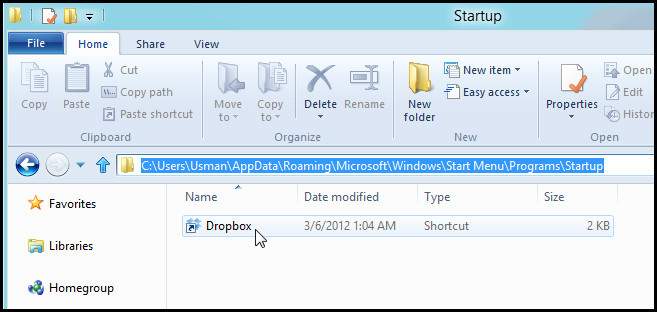
Here’s the way to add an app to run at startup:
- Press Windows Key+S & type the name of the app that you want to start automatically.
- Right-click on the app & select Open file location. If it’s not showing such an option, then it means that the app cannot run at startup.
- Copy the shortcut of your desired application.
- Open the startup folder on your computer manually or using the command.
- Paste the shortcut to the startup folder. Now your desired program will run automatically whenever the Windows boots.
Check out our separate post: Disable File Compression on Windows 11/10.
2. Remove an App From Startup List
You can also remove a program from the startup folder to prevent the app from automatically starting when Windows boots.
Here are the steps to remove an app from startup list:
- Access the startup folder on your computer manually or by using the command.
- Left-click on the program that you want to remove & press Shift+delete.
- Click Yes. The program won’t startup during Windows boot anymore.
How to Fix Startup Folder Not Working in Windows 8
If you have added your desired program’s shortcut in the startup folder, but it’s not starting automatically during Windows boot, you must apply some measures to resolve the case.
Here are the methods to fix startup folder not working in Windows 8 issue:
1. Check Task Manager
You can check whether the app has been enabled or not using the task manager. You can do this from the startup entries.
Here is the way to check task manager:
- Press CTRL+ALT+Delete or right-click on the taskbar & select Task Manager to open the task manager.
- Navigate to the Startup tab.
- Right-click on your desired program & select Enable.
- Restart your computer & check if the program has started automatically or not.
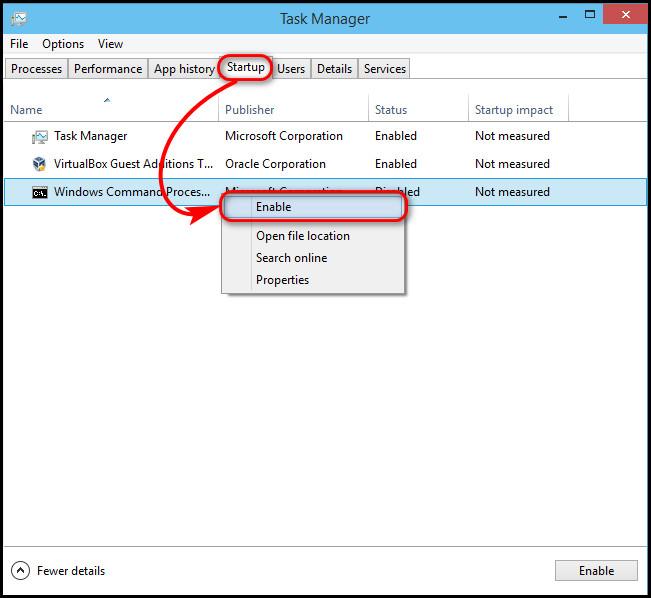
2. Set Up a Batch File to Force Launch Programs
Windows users can force a program to run on startup using batch files. Consider setting up a batch file for your desired app that you want to run automatically.
Here’s how to create a batch file for your desired app:
- Press Windows Key+R & type notepad in the Run prompt. Press Enter to open it.
- Copy & paste the below-mentioned code into the document. Change the file path to your desired program’s location.
@echo off
<Path of the program>\<Programname>.exe
Exit
So, for example, if you want to run Chrome on startup, the path you need to enter will be
@echo off
C:\Program Files (x86)\Google\Chrome\Application\chrome.exe
Exit
- Click File > Save As… & change the extension to BAT.
- Double-click the batch file to run it. Now your desired app will run automatically on Windows startup.
Related content you should read: Remove Bloatware From Windows 11/10.
3. Add Exception to Windows Firewall
Some programs need an internet connection on startup. If such a program isn’t allowed in Windows Firewall, it may not launch or get blocked. If your desired program has a similar requirement, you must add it as an exception to the Firewall.
Here are the steps on how to add an exception to Windows Firewall:
- Press Windows Key+S & type firewall. Click on Windows Firewall.
- Click Allow an app or feature through Windows Defender Firewall.
- Select Change Settings & then click Allow another app.
- Find & add your desired program from the browser.
- Mark the boxes of your desired program in both network types & click Ok.
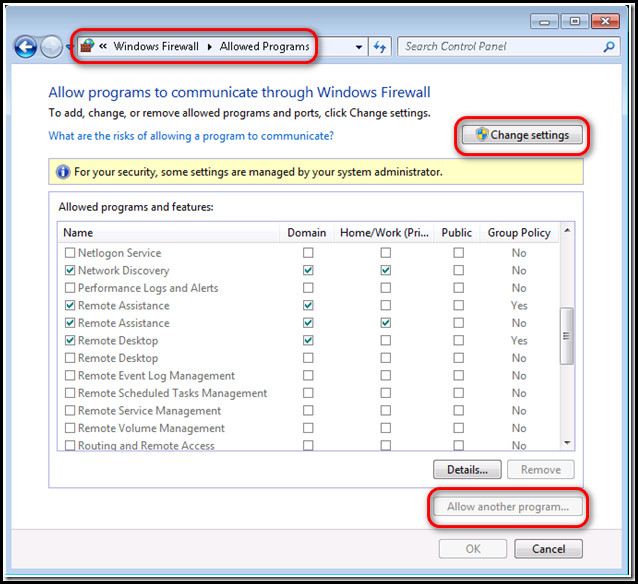
4. Edit Windows 8 Registry
The registry is the highest authority in a Windows PC. So if all the above-given solutions still don’t fix this issue, you should finally try to edit the registry.
Here’s how you can edit Windows 8 registry:
- Press Windows Key+S & type regedit. Click on Registry Editor.
- Go to the following path: HKEY_LOCAL_MACHINE\Software\Microsoft\Windows\CurrentVersion\Run
- Right-click on the empty space & select New > String Value. The value name is the same as the program you want to run.
- Right-click on the newly created value & select Modify.
- Put the path of your desired program’s executable file in the value data field.
- Save the changes & restart your PC.
Now your desired app will run automatically on Windows boot.
Read more on how to Fix Update Error Code 0x80004005 in Windows 11.
FAQs
Where is the startup folder located in Windows 8?
The startup folder is located in %AppData%\Microsoft\Windows\Start Menu\Programs, same as Windows 7 & Vista.
Is it OK to disable all the startup programs?
As a general rule, it is safe to remove startup programs. Sometimes it increases the boot time of your PC.
How do I check startup services?
Right-click on the taskbar & select Task Manager. Then go to the Startup tab. Here you can see the list of all apps that can start automatically & determine which services should be disabled.
Why is my computer startup so slow?
Programs that are meant to load as soon as the computer starts up remain active in the memory. Basically, these startup programs are one of the main reasons for slow boot into Windows. You can disable the startup services to improve boot time of your PC.
Final Thoughts
The startup folder in Windows is a handy way to manage the startup programs/services, as programs will automatically start if we put them inside this folder.
The common location of the startup folder in Windows 8 is C:\Users\Username\AppData\Roaming\Microsoft\Windows\Start Menu\Programs\Startup, the same as Windows 7. You can also access the startup folder by using shell:startup command.
This guide also includes several easy & useful ways to solve startup folder related issues. Hopefully, our guide has made your Windows 8 experience much more enjoyable.

